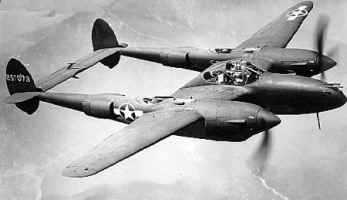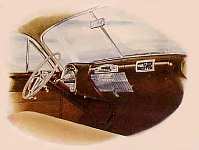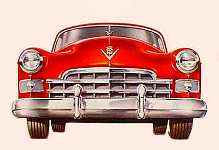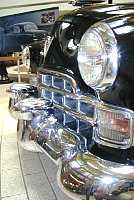[ last update: 09.27.2014 ]
The (new)
Cadillac Database©
Photo Pages
Cadillac
1948
Return to The (New)
Cadillac Database© Index Page
or go back to the Cadillac photo index page to pick another
year
Unless otherwise specified all photos
and illustrations are from Yann Saunders'
collection of Cadillac photos, advertisements and product catalogs,
reproduced courtesy of the Cadillac Motor Car Division and the Cadillac-LaSalle Club
The artist's drawings below are from the 1948 product merchandising folder, being the only literature item describing and illustrating the full range of models that year The publication date on this folder is February, 1948 and cars actually went into production at that time. There was a second publication describing only the 1948 Cadillac power-plant.
Hydra-Matic (automatic transmission), an option in 1941, was now all the rage and 97% of the 1948 Cadillacs were so equipped.
The 1948 cars underwent some radical styling changes. This was the year of the fish-tail fins [on all but the Series 75 models]; these housed the car's tail-lights and directional signals. In-house publications of the time referred to them as "rudder-type" rear fenders as they were inspired by the rounded rudders of the P-38 Lockheed Lightning, a twin-fuselaged WW2 fighter plane designed by Kelly Johnson and powered by twin GM Allison engines that Harley Earl had been allowed to see at Selfridge Field air base in late thirties [the German Luftwaffe pilots later dubbed it the fork-tailed devil].

Left: American Lockheed P-38 Lightning
Right: artistis view of a dog-fight over the English Channel;
a Nazi Messerschmitt "bites the dust" ...or "whacks the water"
This year too, large fenders melted into body in long, straight lines. There was also a unique "horseshoe" instrument panel, hydraulic window lifts as a standard accessory on some models (those with an "X" suffix after the body style number), more glass area as well as a new, curved windshield and rear window.
The easiest way to distinguish a '48 model from the rest is to look at the instrument panel. This year the cars had a unique "horseshoe" design matching the curve of the steering wheel:

Two views of the mew dash panel
with the inverted horseshoe instrument cluster

Front and rear clips of the 1948 cars; the chevrons below
the tail-lights (right) appeared only on Series 62 cars

There were four grille bars this year, i.e. three rows of "egg-crate" openings. As usual, another positive ID feature of the early post-WW2 cars is the grille extensions, below the headlights (above). The 1948 cars had small, round parking lights set in the center of a rectangular fog light housing, on a horizontal plane level with the space between the 2nd and 3rd grille bars (counting from the top). Series 62 cars - and only these models - have three chevrons below the tail-light housings:

The distinguishing feature of Series 62 cars
were these three chevrons below the tail-lights
Additional information on the 1948 models and the related sales literature may be found in The (New) Cadillac Database© sections entitled "Descriptions and Specifications of Cadillac Cars 1946 - 1950", "Cadillac and La Salle Sales Literature 1946 - 1949" and "Cadillac Dream Cars 1948-1949". Further recommended reading includes:
The "Standard Catalog of Cadillac, 1903-2000" edited by James T. Lenzke, © 2000, published by Krause Publications, Inc., 700 E. State Street, Iola, WI 54990 [ISBN #0-87341-925-1, Library of Congress #91-61301].
Space-permitting, some more photos of surviving cars may be added here, later.
The Series 61
|
|
The Series 62
|
|
The Series Sixty Special
|
|
The Series 75
| 1948 production of the Series 75 cars included: style 7519X sedan for 5 passengers (above - 225 units), 7523L business sedan for 9 passengers (90 units), 7523X Sedan for 7 passengers (499 units), 7533L business imperial for 9 passengers (64 units) and 7533X Imperial sedan for 7 passengers (below - 382 units); two bare 75 chassis went to independent coach builders, as did also 2067 commercial chassis on 163" wheel base
|
Return to The
(New) Cadillac Database© Index
Page
or go back to the Cadillac photo index page to pick another yea
© 1996, Yann Saunders and the Cadillac-LaSalle
Club, Inc.
[Background image: bird's eye view of rear of 1948 Sedanet]